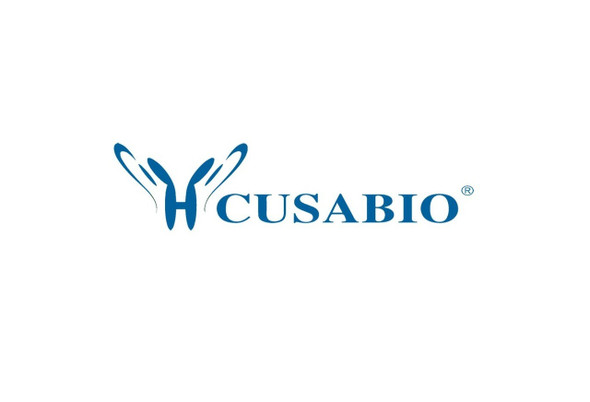Cusabio Helicobacter pylori Recombinants
Recombinant Helicobacter pylori Glutamate--tRNA ligase 1 (gltX1) | CSB-EP308728HUV
- SKU:
- CSB-EP308728HUV
- Availability:
- 13 - 23 Working Days
Description
Recombinant Helicobacter pylori Glutamate--tRNA ligase 1 (gltX1) | CSB-EP308728HUV | Cusabio
Alternative Name(s): Glutamyl-tRNA synthetase 1
Gene Names: gltX1
Research Areas: Others
Organism: Helicobacter pylori (strain ATCC 700392 / 26695) (Campylobacter pylori)
AA Sequence: MSLIVTRFAPSPTGYLHIGGLRTAIFNYLFARANQGKFFLRIEDTDLSRNSIEAANAIIEAFKWVGLEYDGEILYQSKRFEIYKEYIQKLLDEDKAYYCYMSKEELDALREEQKARKETPRYDNRYRDFKGTPPKGIEPVVRIKVPQNEVIGFNDGVKGEVKVNTNELDDFIIARSDGTPTYNFVVTIDDALMGITDVIRGDDHLSNTPKQIVLYKALNFKIPNFFHVPMILNEEGQKLSKRHGATNVMDYQEMGYLKEALVNFLARLGWSYQDKEVFSMQELLELFDPKDLNSSPSCFSWHKLNWLNAHYLKNQSVQELLKLLKPFSFSDLSHLNPTQLDRLLDALKERSQTLKELALKIDEVLIAPVEYEEKVFKKLNQALVMPLLEKFKLELNKANFNDESALENAMRQIIEEEKIKAGSFMQPLRLALLGKGGGIGLKEALFILGKTESVKRIEDFLKN
Source: E.coli
Tag Info: N-terminal 6xHis-SUMO-tagged
Expression Region: 1-463aa
Sequence Info: Full Length
MW: 69.4 kDa
Purity: Greater than 90% as determined by SDS-PAGE.
Relevance: Catalyzes the attachment of glutamate to tRNA(Glu) in a two-step reaction: glutamate is first activated by ATP to form Glu-AMP and then transferred to the acceptor end of tRNA(Glu).
Reference: The complete genome sequence of the gastric pathogen Helicobacter pylori.Tomb J.-F., White O., Kerlavage A.R., Clayton R.A., Sutton G.G., Fleischmann R.D., Ketchum K.A., Klenk H.-P., Gill S.R., Dougherty B.A., Nelson K.E., Quackenbush J., Zhou L., Kirkness E.F., Peterson S.N., Loftus B.J., Richardson D.L., Dodson R.J. , Khalak H.G., Glodek A., McKenney K., FitzGerald L.M., Lee N., Adams M.D., Hickey E.K., Berg D.E., Gocayne J.D., Utterback T.R., Peterson J.D., Kelley J.M., Cotton M.D., Weidman J.F., Fujii C., Bowman C., Watthey L., Wallin E., Hayes W.S., Borodovsky M., Karp P.D., Smith H.O., Fraser C.M., Venter J.C.Nature 388:539-547(1997)
Storage: The shelf life is related to many factors, storage state, buffer ingredients, storage temperature and the stability of the protein itself. Generally, the shelf life of liquid form is 6 months at -20?/-80?. The shelf life of lyophilized form is 12 months at -20?/-80?.
Notes: Repeated freezing and thawing is not recommended. Store working aliquots at 4? for up to one week.
Function: Catalyzes the attachment of glutamate to tRNA(Glu) in a two-step reaction
Involvement in disease:
Subcellular Location: Cytoplasm
Protein Families: Class-I aminoacyl-tRNA synthetase family, Glutamate--tRNA ligase type 1 subfamily
Tissue Specificity:
Paythway:
Form: Liquid or Lyophilized powder
Buffer: If the delivery form is liquid, the default storage buffer is Tris/PBS-based buffer, 5%-50% glycerol. If the delivery form is lyophilized powder, the buffer before lyophilization is Tris/PBS-based buffer, 6% Trehalose, pH 8.0.
Reconstitution: We recommend that this vial be briefly centrifuged prior to opening to bring the contents to the bottom. Please reconstitute protein in deionized sterile water to a concentration of 0.1-1.0 mg/mL.We recommend to add 5-50% of glycerol (final concentration) and aliquot for long-term storage at -20?/-80?. Our default final concentration of glycerol is 50%. Customers could use it as reference.
Uniprot ID: P96551
HGNC Database Link: N/A
UniGene Database Link: N/A
KEGG Database Link: KEGG
STRING Database Link: STRING
OMIM Database Link: N/A










